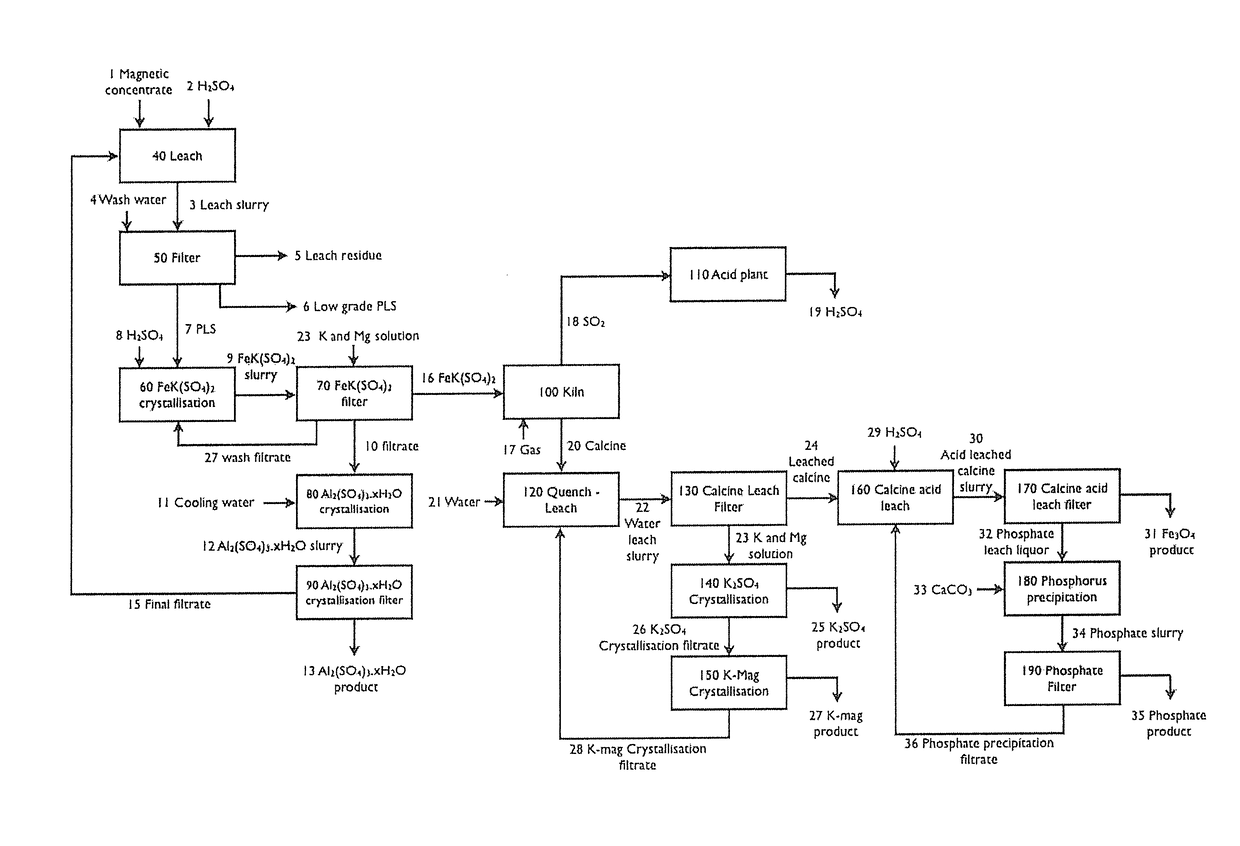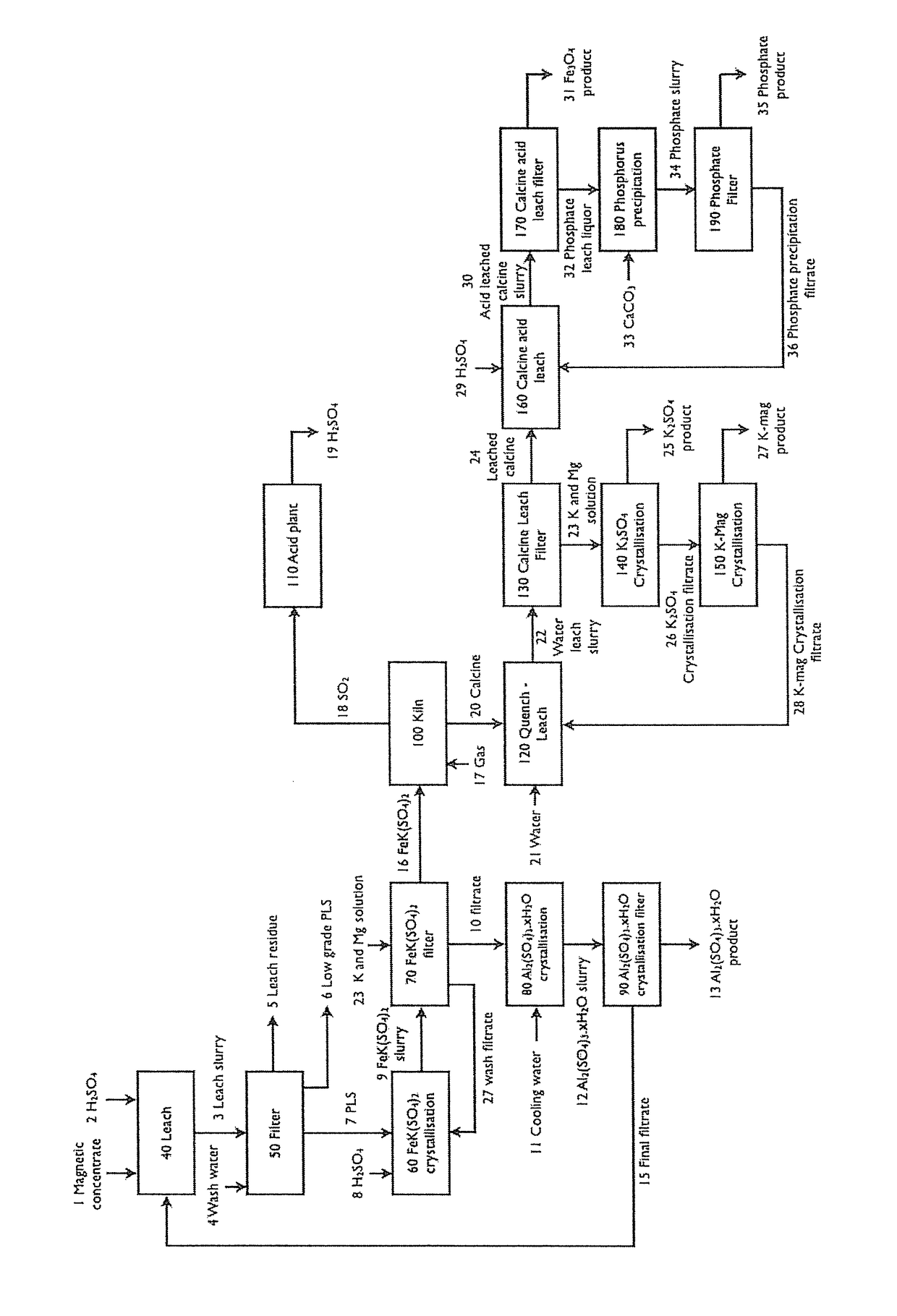Method for the processing of potassium containing materials
a technology of potassium containing materials and processing methods, applied in the direction of phosphorus oxyacids, ferroso-ferric oxides, alkali metal sulfites/sulfates, etc., can solve the problems of no commercial production of potash fertilisers, commercial failures, and commercial uneconomical results, and achieve the effect of varying the degree of hydration
- Summary
- Abstract
- Description
- Claims
- Application Information
AI Technical Summary
Benefits of technology
Problems solved by technology
Method used
Image
Examples
Embodiment Construction
[0049]The method of the present invention is anticipated to be applicable to a broad range of potassium containing minerals, including potassium containing micas, of which glauconite, biotite and phlogopite are representative. Whilst the large part of this description is directed to glauconite alone it is to be understood that the method of the present invention is broadly applicable to potassium containing micas, with particular efficacy in respect of the minerals glauconite, biotite and phlogopite.
[0050]Glauconite is an iron potassium phyllosilicate (mica group) mineral of characteristic green color with very low weathering resistance and very friable. Its chemical formula is (K,Na)(Fe3+,Al,Mg)2(Si,Al)4O10(OH)2. Glauconite can range from 2-8% K2O and is the component in greensand that contributes to the green colour. Greensands also contain gangue minerals such as quartz, kaolinite, feldspar and apatite.
[0051]The glauconite in greensand can be separated from the gangue minerals by...
PUM
| Property | Measurement | Unit |
|---|---|---|
| retention time | aaaaa | aaaaa |
| boiling point | aaaaa | aaaaa |
| temperature | aaaaa | aaaaa |
Abstract
Description
Claims
Application Information
 Login to View More
Login to View More - R&D
- Intellectual Property
- Life Sciences
- Materials
- Tech Scout
- Unparalleled Data Quality
- Higher Quality Content
- 60% Fewer Hallucinations
Browse by: Latest US Patents, China's latest patents, Technical Efficacy Thesaurus, Application Domain, Technology Topic, Popular Technical Reports.
© 2025 PatSnap. All rights reserved.Legal|Privacy policy|Modern Slavery Act Transparency Statement|Sitemap|About US| Contact US: help@patsnap.com


